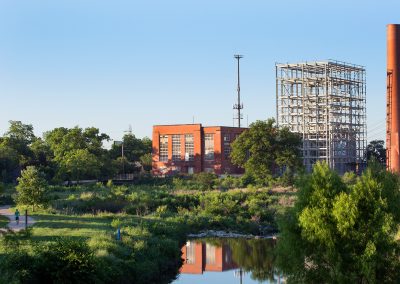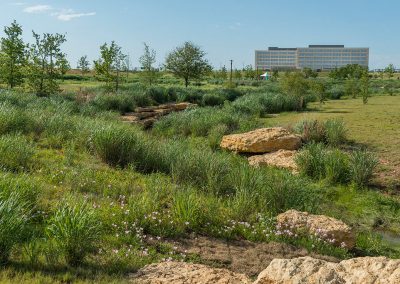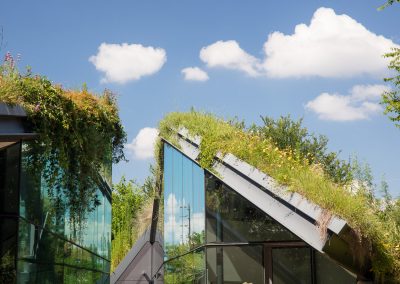Prescribed Fire Research
Wildflower Center land managers and researchers have been lighting landscapes on fire since 2001. Why? Center Director of Land Resources Matt O’Toole, who usually serves as burn boss, admits it might sound counter-intuitive, but explains that “one of the best tools for preventing out-of-control wildfires is prescribed fire.”
While lightning-sparked wildfires can be devastating to populated areas, they are essential to the health of landscapes; prescribed fire reaps the same benefits without the risk. Fire — wild or controlled — improves biodiversity, which benefits plants and wildlife. As Center Ecologist Michelle Bertelsen says, “What we’re doing is just putting back a natural part of these landscapes, which is fire.”
The Wildflower Center uses about 70 acres of land, known as the Hill Country Trails area, to study how fire stacks up to other approaches (such as frequent mowing) to manage unwanted vegetation on large landscapes. O’Toole says these efforts — collectively known as the Hill Country Research Program — have shown that “fire helps remove the thatch layer on the soil surface, creating a more open canopy that helps forbs and other native plants germinate.” Visitors to the Wildflower Center can see this ongoing research while walking the Simmons Research Trail.
With less than 1 percent of Texas Hill Country land federally or municipally owned, biodiversity and preservation of the region’s flora lies in the hands of private landowners. This project scientifically examines the short- and long-term effects of different land management methods and demonstrates these techniques to landowners and the general public. The goal is to identify techniques that are effective in restoring and sustaining native plant communities of the Texas Hill Country.
Benefits of Burning:
- Summer burns can reduce the invasive non-native species, such as King Ranch bluestem (Bothriochloa ischaemum var. songarica), and increase the diversity of spring wildflowers such as black-eyed Susan (Rudbeckia hirta) and Indian paintbrush (Castilleja indivisa).
- Winter burns can result in more native prairie grasses such as little bluestem (Schizachyrium scoparium) and curly mesquite (Hilaria belangeri).
- Fall burns can result in more diverse wildflowers overall.
- Burns can return sites to their historical, biologically diverse origins; in Central Texas that often means turning woodland into grassland dotted with a few trees — which is preferred by wildlife such as scissor-tailed flycatchers, bobwhite quail and armadillos.
This program has set a precedent for burning on other sites, including the City of Austin Water Quality Protection Lands and Fort Hood, as well as a number of ranches.
DIG DEEPER
Burns Into Boons: The phoenixlike adaptations of native plants
Burning Landscapes for Their Own Good
Igniting the Savanna Meadow
Benefits of Burning
Video: From Fire to Flowers
LOCATION
Based at the Wildflower Center
PROJECT DATES
- Ongoing



